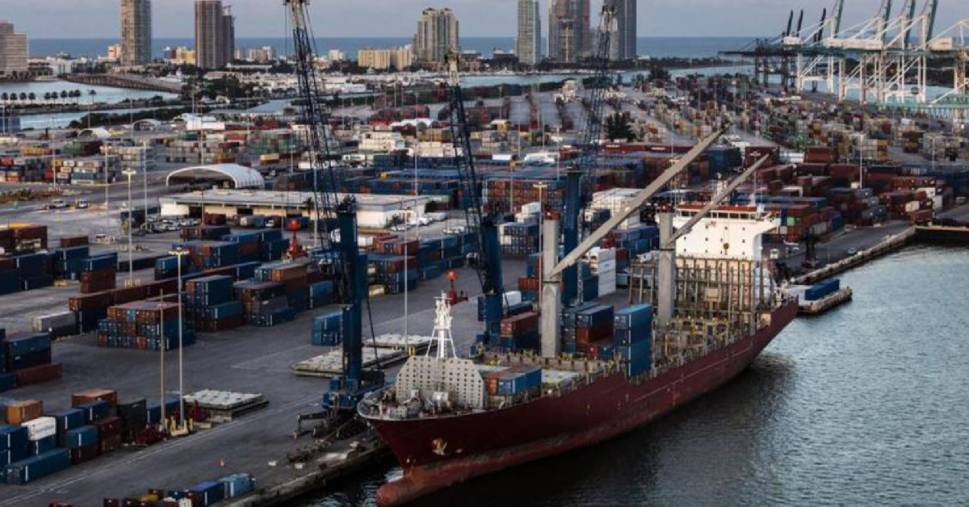
A “once-in-a-generation” injection of billions of federal dollars into state and local transportation and infrastructure projects is headed to Florida. The Bipartisan Infrastructure Law will steer a sizable share of the $1.2 trillion to support new and existing state and local projects previously considered impossible due to lack of funding or regional coordination.
For Florida’s state, county and municipal leaders, the federal money, along with existing federal and state investments, will drive economic development for the next five years and beyond.
Projects targeted by the federal Infrastructure Law encompass almost every transportation modality and infrastructure program. These include surface roads and highways; air and seaports; rail, bus, trolley and other public transit systems, including multimodal terminals and facilities; and the growing number of resiliency and sustainability initiatives designed to harden the state and nation against climate change. Projects planned or underway qualify.
The competitive grant process will require state and local match. With transportation and infrastructure deemed critical to Florida’s continued recovery and long-term growth, almost $20 billion in Gov. DeSantis’ “Freedom First” budget targets construction and maintenance of roads, bridges, rails, seaports and other public transportation systems. This funding will help qualify for the federal match.
The Florida Department of Transportation will oversee distribution, which will not require legislative approval. The application process will weigh selection criteria based upon mobility, safety, sustainability, economic competitiveness, equity and community connectivity.
The infrastructure funding opportunities at a glance
In all, the federal law outlines 25 competitive infrastructure funding opportunities for local governments. A short list includes:
- The $7.5 billion in Department of Transportation Rebuilding American Infrastructure Sustainably and Equitably (RAISE) Grants will fund road, rail, transit and other surface transportation of local and/or regional significance. Another $2 billion in DOT Port Infrastructure Development Program grants will modernize and expand U.S. ports to remove supply chain bottlenecks, and ensure long-term competitiveness, resilience and sustainability.
- The $5 billion National Infrastructure Project Assistance, also known as “Megaprojects,” supports critical, large, multimodal, multi-jurisdictional projects of regional or national significance.
- The $5 billion Safe Streets and Roads for All grant program will fund local governments’ efforts to advance “vision zero” and other street improvements to reduce crashes and fatalities, especially involving cyclists and pedestrians.
- Some $7.5 billion contained within the Charging and Fueling Infrastructure grants and related discretionary grants will fund deployment of publicly accessible electric vehicle charging infrastructure, including hydrogen, propane and natural gas fueling. Another $8 billion will seek to create four “regional clean hydrogen hubs” to improve hydrogen production, processing, delivery, storage, and end use.
- The $1 billion Reconnecting Communities fund will seek to reconnect communities divided by transportation infrastructure, particularly historically disadvantaged communities separated by a highway. The $2 billion Rural Surface Transportation Grant will improve and expand surface infrastructure for the movement of people and freight in rural areas.
Funding also will support local building code agencies, codes and standards developers, utilities, and other entities to update and implement sustained building energy codes.
The Environmental Protection Agency (EPA) and the Federal Emergency Management Agency (FEMA) funding will support projects addressing resiliency, sustainability and hazard mitigation to reduce risks from disasters and other natural hazards, including brownfields and the safe clean-up of contaminated properties.
The time to act is now
The list of funding opportunities is lengthy, but the time to act is now. The application process will take significant coordination between cities, states, tribal governments, community stakeholders, metropolitan planning organizations (MPOs) and other key partners, the administration wrote. The county and municipal leaders’ assembled team should include planners, partners and government relations professionals whose connections with key state and federal agencies will be critical to crafting successful applications.
Anthony Bedell is a federal lobbyist with Becker and a former deputy assistant secretary for congressional affairs with the U.S. Department of Transportation. José K. Fuentes is a state and local lobbyist based in the firm’s Miami and Tallahassee offices.